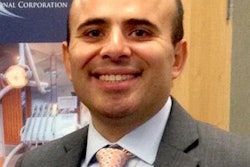
Let me start by saying something that I want you to keep in mind throughout this entire article: Don't be afraid to spend training time or money on great coding. After all, you may think that your ability to perform the best services is the key to success, but where does your money really come from? That's the biggest question to answer.
 Christine Taxin, founder and president of Links2Success.
Christine Taxin, founder and president of Links2Success.Trust me, being married to a dentist, I have looked for a money tree over the past 30 years. Guess what? The money always comes from the patient, not a tree. Skipping much-needed practice updates because you believe you can't afford them or skimping on team training because you believe it is too expensive will cost you so much more.
It not only shows a reluctance to provide training but also keeps the team from understanding the importance of codes and how the business of dentistry really works. How do you understand what must be documented for the codes you are using? Will the lack of knowledge trigger an audit? Will it cost you thousands of dollars to insurance companies who are downloading your claims? Are your team members billing for insurance coverage or treatment care?
Like it or not, if you want to run a successful dental practice, you have to make adjustments every day, so why not start with the leadership of truly understanding your business and have your team support you in that quest? If you're not sure where to start, here are a few tips to help you develop a plan that will provide the best service to your patients, the joy of learning to your team members, and a profit sheet that will pass all audits so you can keep your income.
1. Set goals
When you set goals for a daily number, having the ability to add in medical billing will allow you to add profit without adding patients.
For example, think about a bone replacement graft, retained natural tooth, first site in quadrant. What is your fee -- and what should it really be? How can medical billing play a role? These are questions to consider and know.
2. Find out how your practice compares
Are you unsure what other dentists in your area charge? Now is the time to find out. Make sure your fees do not fall too far below or rise too far above your local market. Remember, all fees are set up by your ZIP code. Determine how much it costs you to perform the dentistry before you set or adjust your fees. Base your fees on the number of patients you have as well as your debt, practice expenses, overhead costs, and experience level.
3. Build a rapport with patients
Patients today want to know about COVID-19 and their safety in your business. Look at the amount of education most of us have had over the last few months. Everyone understands transmission, so let them know that periodontal disease can play a role in COVID-19 severity. Talk with your patients about their oral healthcare goals, their jobs, and their families. Take the time to educate them about their condition and the services you provide. Let them know you care, and you will create loyal patients who continue to call your practice their wellness home.
4. Know everything about fees
Fees are not meant to sway a patient, but your ability to have meaningful conversations will. When you start to bill both dental and medical for patients (regardless of accepting payment), you are supplying the best service available to them.
Remember, it's important to let them know that, even with a higher deductible using medical, dental might not even cover some of the services or they still may have an out-of-pocket expense.
5. Track overhead expenses
Everyone tracks products, but one item that is not often tracked is putting the lab bill into the computer so dentists can really see what they are making. Without that number, dentists simply do not see the true amount being collected.
Consider this: The fee is $1,200 for a crown. You are on dental insurance and can only collect $980, plus your lab bill is $100. Without that lab bill on the ledger, you are not seeing your true numbers.
Also, keep track of what you are billing to medical versus dental and see those numbers go up.
Example: If you are an office supplying bone grafts and implants, what is your fee? What is the lab fee? What are you collecting? Which plans are paying? A good computer system can help you with those numbers.
If you need help with medical billing questions, contact me. I am glad to help.
Christine Taxin is the founder and president of Links2Success, a practice management consulting company for the dental and medical fields. Prior to starting her own consulting company, Taxin served as an administrator of a critical care department at Mount Sinai Hospital in New York City and managed an extensive multispecialty dental practice in New York.
The comments and observations expressed herein do not necessarily reflect the opinions of DrBicuspid.com, nor should they be construed as an endorsement or admonishment of any particular idea, vendor, or organization.



















